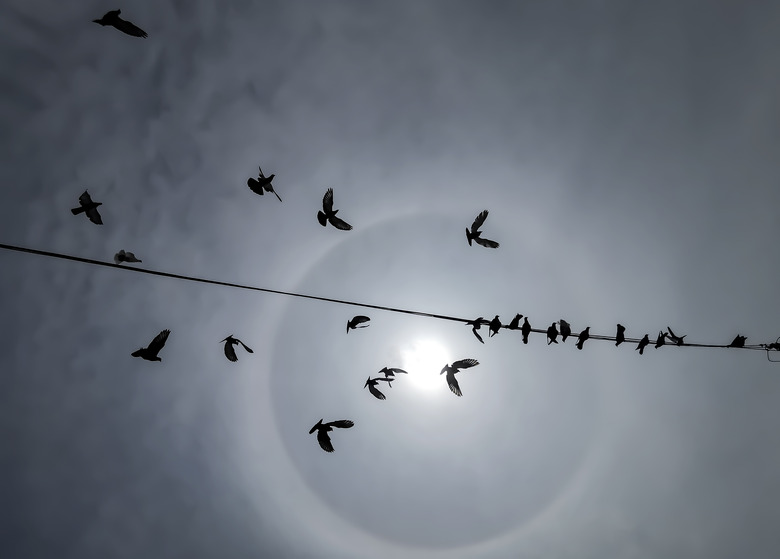Why Don't Birds Get Electrocuted On Electric Wires?
You look up on a bright sunny day to see a line of tiny birds on power lines looking down at you.
How is it they can stand on an electric wire and not receive an electric shock? It's a good question since you know that if you were to touch that wire yourself, you'd likely receive a dangerous shock of electricity.
What are the reasons why birds are not electrocuted when they're in direct contact with an electric wire?
Birds on Electric Wire
Birds on Electric Wire
Electrocution is injury or death that occurs because of electrical shock. If birds on electric wire are not getting electrocuted, this means they are not getting shocked by electricity. Essentially, this means that the electricity is able to pass through the birds without damaging them.
But what are the reasons why birds are not electrocuted? In short, electricity works via electrons flowing through conductors. If there are birds on electric wire that aren't getting shocked, it means that the bird is not a good conductor of electricity. This means that birds don't allow the electricity to flow from the wire into their own body.
How do birds on electric wire do that?
Reasons Why Birds Are Not Electrocuted on Wires: They're Not Good Conductors
Reasons Why Birds Are Not Electrocuted on Wires: They're Not Good Conductors
Birds are able to sit on electrical power lines because the electrical current essentially ignores the bird's presence and continues to travel through the wire instead of through the bird's body. A bird's body is not a good conductor of electricity.
Electricity, similar to water, flows using the least amount of resistance possible. In electrical power lines, electricity flows along copper wires. Copper is an excellent conductor of electricity in that it allows electricity to flow easily along its surface.
A bird, on the other hand, is made of cells and tissues. These cells and tissues do not provide the electricity in the wire with an easier route to travel than the one it is already on. Because a bird's body is not a good conductor of electricity, the electricity essentially ignores the bird on the wire and continues to travel along the copper wiring to its destination.
In fact, humans would also be able to not be shocked by a power line if we hung suspended from the power line with both of our hands on the line and no other grounding objects around us.
Don't try that at home though since there are exceptions to these rules!
Shocking Situations
Shocking Situations
While birds on power lines are essentially safe and aren't in true danger, they will not be so lucky if they happen to touch the wire and certain other objects at the same time. If the second object is an electrical grounding wire or a second wire carrying another voltage, the voltage difference causes a current flow through the bird between the two wires.
Electricity travels from a place of high voltage to low voltage, just as water travels from high elevation to low elevation.
A bird, or any living thing, that touches a wire (where electricity is moving from high voltage to low voltage) and also touches a grounded metal object (a place with no voltage) creates a path that allows the electricity to travel through that body and into the place with no voltage. When electricity travels through a body in this fashion, electrocution takes place, and the bird can die.
The level of electrocution will depend on the power line itself, how long the current flows through the body of the bird/animal, and the overall voltage of the power line.
Cite This Article
MLA
J.D., George Lawrence. "Why Don't Birds Get Electrocuted On Electric Wires?" sciencing.com, https://www.sciencing.com/dont-birds-electrocuted-electric-wires-5180022/. 22 November 2019.
APA
J.D., George Lawrence. (2019, November 22). Why Don't Birds Get Electrocuted On Electric Wires?. sciencing.com. Retrieved from https://www.sciencing.com/dont-birds-electrocuted-electric-wires-5180022/
Chicago
J.D., George Lawrence. Why Don't Birds Get Electrocuted On Electric Wires? last modified March 24, 2022. https://www.sciencing.com/dont-birds-electrocuted-electric-wires-5180022/
